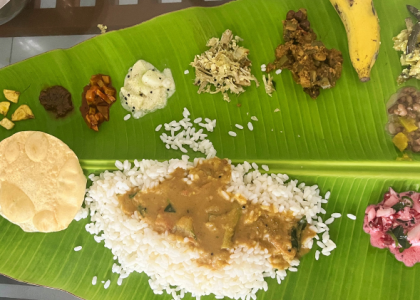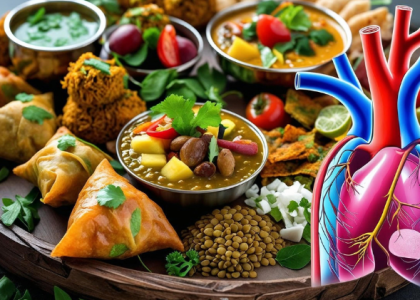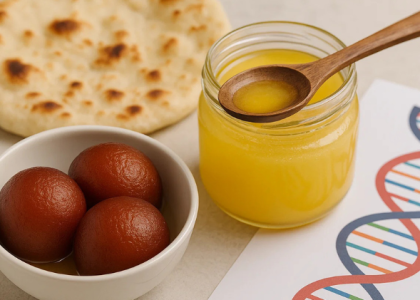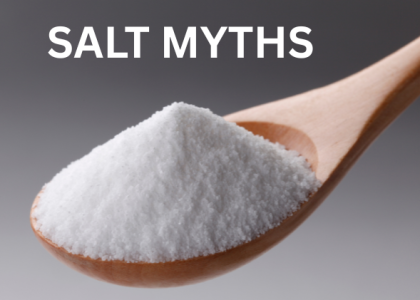Sunita’s mother always said, “Food is medicine.” But Sunita didn’t understand what she meant until her doctor told her about chronic inflammation.
“Your CRP levels are high,” the doctor explained. “This inflammation is silently damaging your arteries. We need to bring it down to prevent heart problems.”
The doctor suggested an anti-inflammatory diet. Sunita panicked. “Do I have to eat bland Western food now? Give up all my favorite dishes?”
Her doctor smiled. “Actually, your Indian kitchen is already full of the most powerful anti-inflammatory foods on Earth. Turmeric, ginger, garlic, coriander—these aren’t just spices. They’re natural medicines that can heal your heart.”
Sunita was amazed. The same spices her grandmother used daily were exactly what modern science recommends for fighting inflammation. She didn’t need to abandon her culture’s food—she needed to use it more wisely.
What Is Inflammation and Why It Hurts the Heart
Inflammation is your body’s alarm system. When you get injured or infected, inflammation helps fight the problem and heal damage. This is good inflammation.
But chronic inflammation is different. It’s like a fire alarm that won’t turn off, even when there’s no real emergency.
What causes chronic inflammation:
- Poor diet (too much sugar, fried foods, processed foods)
- Stress (work pressure, family tensions)
- Lack of sleep
- Being overweight, especially belly fat
- Smoking
- Too little exercise
How inflammation damages your heart: Chronic inflammation acts like sandpaper inside your arteries. It scrapes and irritates artery walls. Your body tries to heal this damage by depositing cholesterol and other substances. Over time, this creates plaque buildup.
Inflammation also makes plaque unstable. Unstable plaque can rupture suddenly, causing blood clots that trigger heart attacks.
Tests that measure inflammation: CRP (C-Reactive Protein): This blood test measures inflammation levels. Higher CRP means more inflammation and higher heart attack risk.
- Normal: Less than 1.0 mg/L
- Moderate risk: 1.0-3.0 mg/L
- High risk: Over 3.0 mg/L
South Asians and inflammation: Research shows South Asians tend to have higher baseline inflammation levels than other groups. We’re also more likely to have metabolic syndrome, which increases inflammation.
This helps explain why we get heart disease at younger ages and lower cholesterol levels than other ethnic groups.
The good news: Anti-inflammatory foods can significantly reduce CRP levels and heart disease risk. And many of the most powerful anti-inflammatory foods are already in South Asian kitchens.
Anti-Inflammatory Spices and Foods We Already Use
Your spice box is a treasure chest of heart-healing compounds. Let’s explore the science behind these everyday miracles.
Turmeric (Haldi): Contains curcumin, one of nature’s most powerful anti-inflammatory compounds. Studies show turmeric can:
- Reduce CRP levels by 25-50%
- Lower cholesterol and blood pressure
- Prevent plaque formation in arteries
- Improve insulin sensitivity
How to use more: Add turmeric to dal, vegetables, rice, and even milk (turmeric latte). Use fresh turmeric root when possible.
Ginger (Adrak): Contains gingerol, which fights inflammation and improves circulation. Research shows ginger can:
- Reduce inflammatory markers
- Lower blood pressure
- Improve cholesterol levels
- Prevent blood clots
How to use more: Fresh ginger in tea, curries, and chutneys. Dried ginger powder in cooking and baking.
Garlic (Lasun): Contains allicin and other sulfur compounds that fight inflammation. Garlic can:
- Reduce CRP levels
- Lower blood pressure and cholesterol
- Prevent artery calcification
- Boost immune function
How to use more: Crush fresh garlic and let it sit 10 minutes before cooking to activate allicin. Use in tadkas, curries, and chutneys.
Coriander (Dhania): Both seeds and leaves contain antioxidants that reduce inflammation. Benefits include:
- Lower cholesterol levels
- Better blood sugar control
- Reduced oxidative stress
- Improved heart health
Cumin (Jeera): Rich in antioxidants and anti-inflammatory compounds. Can help:
- Reduce inflammatory markers
- Improve cholesterol profile
- Enhance insulin sensitivity
- Support weight management
Fenugreek (Methi): Seeds and leaves both fight inflammation. Research shows fenugreek can:
- Lower blood sugar and cholesterol
- Reduce inflammatory markers
- Improve insulin function
- Support heart health
Cinnamon (Dalchini): Contains cinnamaldehyde, which has powerful anti-inflammatory effects:
- Reduces CRP levels
- Improves insulin sensitivity
- Lowers blood sugar
Other anti-inflammatory foods common in South Asian diets:
- Onions: Contain quercetin, a powerful anti-inflammatory
- Tomatoes: Rich in lycopene, which fights inflammation
- Leafy greens: Spinach, methi, and other greens are inflammation fighters
- Lentils and beans: Provide fiber and protein that reduce inflammation
- Nuts: Almonds, walnuts contain healthy fats that fight inflammation
Easy Food Swaps
You don’t need to completely change your diet. Small swaps can dramatically reduce inflammation while keeping the foods you love.
Cooking method swaps:
Instead of deep frying → Try these methods:
- Roast vegetables with minimal oil and spices
- Steam vegetables, then add tadka
- Grill or bake instead of frying
- Use air fryer for crispy textures with less oil
Instead of heavy oil tadkas → Lighter options:
- Use 1 teaspoon oil instead of 2-3 tablespoons
- Add water or vegetable broth to prevent sticking
- Use more spices and herbs for flavor
- Try dry roasting spices first, then add minimal oil
Ingredient swaps:
White rice → Better options:
- Brown rice (start with 50/50 mix)
- Quinoa mixed with rice
- Cauliflower rice mixed with regular rice
- Add extra vegetables to rice dishes
Refined flour rotis → Healthier versions:
- Whole wheat flour
- Mix of wheat and millet flours
- Add ground flax seeds to dough
- Make rotis smaller and thinner
Sugar in chai/desserts → Natural alternatives:
- Reduce sugar gradually (taste buds adapt)
- Use dates or stevia in moderation
- Add cinnamon for natural sweetness
- Try cardamom and fennel for flavor without sugar
Processed foods → Whole food versions:
- Make chutneys fresh instead of jarred versions
- Use whole spices instead of spice mixes with additives
- Choose fresh vegetables over canned/frozen with sauces
- Make yogurt-based raitas instead of creamy dressings
Snack swaps:
- Roasted chickpeas instead of fried snacks
- Fresh fruit with a pinch of chaat masala
- Nuts and seeds instead of packaged snacks
- Vegetable sticks with hummus or yogurt dip
A Sample 1-Day Meal Plan
Here’s how anti-inflammatory eating looks with familiar South Asian foods:
Morning (7 AM): Turmeric Golden Milk: Warm milk with 1/2 teaspoon turmeric, pinch of black pepper, cinnamon stick. The black pepper helps your body absorb turmeric better.
Breakfast (8 AM):
- 2 small whole wheat rotis
- Vegetable omelet with onions, tomatoes, spinach, and herbs
- Fresh mint chutney (made with yogurt, mint, coriander, ginger)
- 1 cup fresh fruit (papaya or guava)
Mid-Morning (10 AM): Fresh ginger tea with a few almonds or walnuts
Lunch (12:30 PM):
- 1 cup brown rice (or 50/50 brown/white rice mix)
- Dal with turmeric, cumin, coriander, and minimal oil tadka
- Mixed vegetable curry (okra, eggplant, tomatoes) with anti-inflammatory spices
- Fresh salad with cucumber, tomatoes, onions, lemon, and chaat masala
- Small portion of yogurt with roasted cumin powder
Afternoon Snack (3:30 PM):
- 1 cup herbal tea (tulsi, ginger, or cinnamon)
- Small handful of roasted chickpeas with spices
Dinner (7 PM):
- 2 small rotis or 1/2 cup rice
- Fish or chicken curry made with tomatoes, onions, ginger, garlic, turmeric
- Sautéed spinach with garlic
- Small kachumber salad (cucumber, tomato, onion, coriander)
Before Bed (9 PM): Herbal tea: Tulsi or chamomile with a pinch of turmeric
Key principles in this meal plan:
- Anti-inflammatory spices in every meal
- Minimal oil usage
- Plenty of vegetables and fiber
- Balanced portions
- Regular hydration with herbal teas
Supplements That Help
While food should be your first priority, certain supplements can boost your anti-inflammatory efforts.
Turmeric/Curcumin supplements:
- Look for supplements with black pepper extract (piperine) for better absorption
- Typical dose: 500-1000mg daily
- Take with food to reduce stomach irritation
- May interact with blood thinners—check with your doctor
Omega-3 fatty acids:
- EPA and DHA from fish oil or algae oil
- Typical dose: 1000-2000mg daily
- Reduces inflammatory markers significantly
- Especially important for vegetarians who don’t eat fish
Vitamin D:
- Low vitamin D increases inflammation
- Many South Asians are deficient due to darker skin and limited sun exposure
- Get blood levels tested first
- Typical dose: 1000-4000 IU daily based on blood levels
Magnesium:
- Deficiency increases inflammation
- Common in people with diabetes
- Typical dose: 200-400mg daily
- Choose magnesium glycinate for better absorption
Probiotics:
- Gut health directly affects inflammation
- Look for multi-strain formulas
- Include fermented foods like yogurt, kefir, or fermented vegetables
Important notes about supplements:
- Always discuss with your doctor, especially if you take medications
- Start with one supplement at a time
- Buy from reputable brands with third-party testing
- Supplements enhance but don’t replace a healthy diet
Did You Know? Turmeric, garlic, and ginger—three of the most powerful anti-inflammatory foods on Earth—are already staples in most Indian kitchens. Research shows that people who eat these spices regularly have 40-60% lower levels of inflammatory markers compared to those who don’t. Your grandmother’s cooking wisdom is backed by modern science!
Action Steps
Transform your kitchen into a heart-healing pharmacy starting today:
Reduce deep frying, increase raw veggies: This week, replace one fried dish with a roasted or steamed version. Add a fresh salad or raw vegetable side to every lunch and dinner. Try kachumber salad, sliced cucumbers with chaat masala, or carrot sticks with yogurt dip. Raw vegetables provide enzymes and nutrients that cooking destroys.
Use less oil in tadkas: Cut your tadka oil in half starting tomorrow. Use 1 teaspoon instead of 1 tablespoon. Add spices to the hot oil quickly to prevent burning, then add a splash of water or vegetable broth if needed. You’ll be amazed how much flavor you can get with less oil.
Try herbal teas like tulsi or ginger: Replace one cup of regular tea or coffee daily with anti-inflammatory herbal tea. Make fresh ginger tea by simmering sliced ginger in water for 10 minutes. Try tulsi tea bags for convenience. Drink these teas between meals for maximum anti-inflammatory benefits.
Stock up on inflammation-fighting spices: Check your spice box this weekend. Make sure you have fresh turmeric, ginger, garlic, cumin, coriander, and cinnamon. Buy small quantities of high-quality spices and replace them every 6 months for maximum potency.
Frequently Asked Questions
Q: I’m vegetarian. Can I get enough anti-inflammatory nutrients without fish? A: Absolutely! Plant-based diets can be extremely anti-inflammatory. Focus on turmeric, ginger, leafy greens, nuts, seeds, and legumes. Consider algae-based omega-3 supplements and ensure adequate vitamin B12. Many traditional Indian vegetarian foods are naturally anti-inflammatory.
Q: How quickly will I see results from an anti-inflammatory diet? A: Some people feel more energetic within 1-2 weeks. Blood markers like CRP typically improve within 6-12 weeks of consistent dietary changes. Joint pain and stiffness often improve within a month. The key is consistency—occasional anti-inflammatory meals won’t make much difference.
Q: Can I still enjoy traditional sweets and fried foods occasionally? A: Yes, moderation is key. Follow the 80/20 rule—eat anti-inflammatory foods 80% of the time, and allow treats 20% of the time. When you do have sweets or fried foods, make them special occasions rather than daily habits. Balance indulgent meals with extra vegetables and herbal teas.
References
- Calder, P.C., et al. (2017). A consideration of biomarkers to be used for evaluation of inflammation in human nutritional studies. British Journal of Nutrition, 109(S1), S1-S34.
- Aggarwal, B.B., et al. (2013). Curcumin: the Indian solid gold. Advances in Experimental Medicine and Biology, 595, 1-75.
- Ried, K., et al. (2016). Effect of garlic on serum lipids: an updated meta-analysis. Nutrition Reviews, 71(5), 282-299.
- Mashhadi, N.S., et al. (2013). Anti-oxidative and anti-inflammatory effects of ginger in health and physical activity. International Journal of Preventive Medicine, 4(Suppl 1), S36-S42.
- Calder, P.C. (2015). Marine omega-3 fatty acids and inflammatory processes: effects, mechanisms and clinical relevance. Biochimica et Biophysica Acta, 1851(4), 469-484.
- Prasad, S., et al. (2014). Turmeric, the golden spice: from traditional medicine to modern medicine. Herbal Medicine: Biomolecular and Clinical Aspects, 2nd edition, Chapter 13.
- Anand, S.S., et al. (2000). Risk factors, atherosclerosis, and cardiovascular disease among Aboriginal people in Canada. The Lancet, 356(9228), 279-284.
If this helped you, please share it with someone you love.




